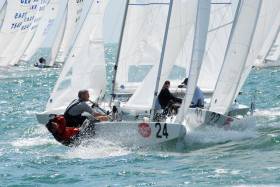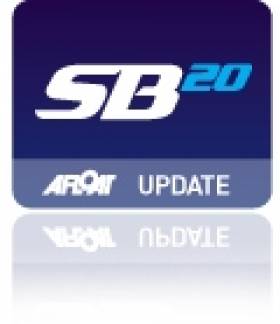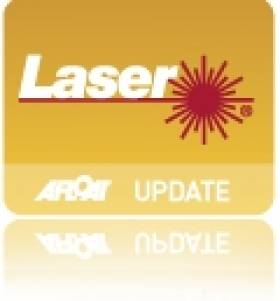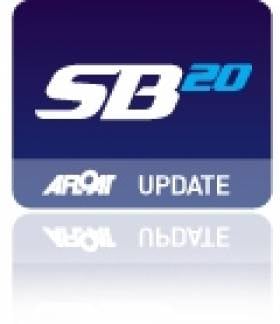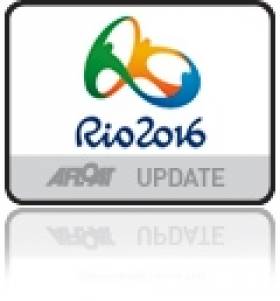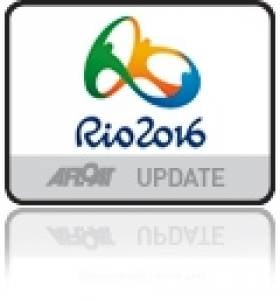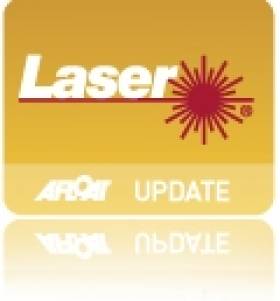Displaying items by tag: Lake Garda
Wildcard On Form at First J/70 Corinthian World Cup
Wildcard took 13th overall out of 75 boats at the inaugural J/70 Corinthian World Cup on Lake Garda earlier this month.
This was a remarkable result especially for young helm Harry Twomey as it was his first time back sailing after sustaining serious injuries in a car crash while attending the Sailing Intervarsities earlier this year.
Due to his injuries, Harry helmed with restricted use of his right hand and a slight adaptation of the stick to make it easier for him to drive, making the result an even more amazing achievement.
The J70 Corinthian Cup from 1-4 June at Riva del Garda was the first event in the history of the class exclusively dedicated to Corinthian crews.
Seventy-five crews from 20 countries were greatly challenged for the first two days of the event by the famous Lake Garda wind, “Ora”.
Due to a lack of wind for the final two days there was no racing on those days. This was disappointing for the Irish team who were hoping to build on the strength of their performance on the first two days of the event.
 Team Wildcard (from left): Richie Harrington, William Twomey, Sally O’Flynn and Harry Durcan and Harry Twomey
Team Wildcard (from left): Richie Harrington, William Twomey, Sally O’Flynn and Harry Durcan and Harry Twomey
Winners of the inaugural event were the Italian team White Hawk with two bullets, a second and a third place. The silver medal went to Irrational Exuberance from Estonia and the bronze went to the Australian crew of Celestial.
Wildcard’s crew scorecard included a third and an eighth place in the six-race series.
The Royal Cork Yacht Club team made up of helm Harry Twomey, Richie Harrington, William Twomey, Sally O’Flynn and Harry Durcan will now turn their intentions to the J/70 Europeans in Weymouth this September.
Speaking about their experience in Lake Garda, Wildcard owner William Twomey said: “Coming out here to compete against 75 J/70 crews sharing our passion was an amazing experience.
“The icing on the cake was seeing my son [Harry] back on the water again. He has spent a very gruelling four months in recovery, having undergone several surgeries due to the injuries he sustained in a car crash last February and is facing many more months of rehab as his recovery from the accident in still ongoing.
“Instrumental to how well he performed was the support of the amazing Wildcard team who have now been with team Wildcard for a number of years. They are a fantastic group of sailors who all stepped in and went above and beyond to help Harry who has a number of restrictions due to his injuries.
“Our goal going to Italy was to get Harry back on the water, we are thrilled to have achieved 13th place in the World [Cup].”
Maurice ‘Prof’ O’Connell joins the media team for next week’s Star Europeans and Star Sailors League on Lake Garda.
The professional sailor and coach, and one-design expert with North Sails Ireland, will be providing the in-studio commentary and analysis with Digby Fox for live action on StarSailors.com along with Shirley Robertson who will be out on the water.
Prof is no stranger to broadcast sailing coverage, having been in the RTÉ studios for the last three Olympic Games — and he’s certainly no stranger to the Star class, with his final race at the Star Worlds in Miami only 11 years ago.
This year Ireland’s focus will be on the O’Leary brothers Peter and Robert, set to compete against a who’s-who of the racing world from this Wednesday 15 May.
1720 Success For Ireland at Italy's Centomiglia race
Italy's Centomiglia race was held over last weekend and the green sail numbers IRL 1759 of Conor Clarke's 1720 "WOW" were leading the fleet in this iconic race on beautiful Lake Garda.
The 45–nautical mile course started at 8.30am with a somewhat chaotic gate start off the town of Blogliaco on the western shore of the lake. The race consisted of a two and a half hour upwind leg, a three hours downwind sleigh ride "blast" and then a 2hr 40m final upwind.
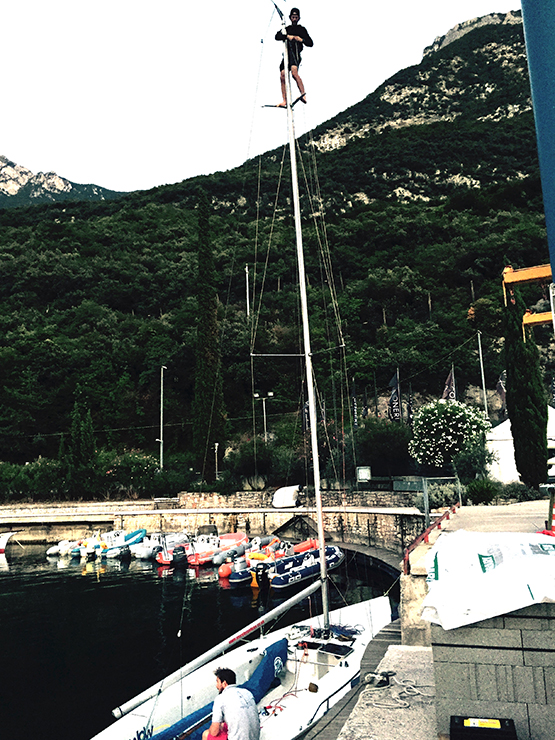
#sb20 – An international SB20 World Championships kicked off in Torbole, Lake Garda, Italy today with three races completed in demanding conditions. None of the 11 Irish boats competing figure in the top ten overall to date with the best Kieran Dorgan's Cove Sailing Club entry from Cork Harbour lying in 24th. Full results are HERE.
Ninety-two boats took to the water on Day 1 of the World Championship, Monday July 6, 2015, after all boats were launched and measured.
Lake Garda turned on the sunshine with temperatures of 35 degrees C, and a shifty 15-18 knots of wind with patches of variable pressure, which made for a challenging start. Rising to the top of the leaderboard on a difficult first day was Ian Ainslie, sailing the Italian 'Protect Tapes' team, with Paulin Gian Matteo and Adam Martin. They took a fourth in the first race before going on to win the next two, leaving them with just 6 points overnight.
In second is the South African 'Race Ahead Spirit of Cape Town' team, skippered by Roger Hudson, who put in a consistent third and fourth, before also taking a third race win in their fleet. Chris Dare's Australian team is in third overall with two second places, while fourth is held by the Russian entry of Vladimir Prosikhin, who scored an opening race win before a fifth and seventh.
Two British boats are tied on 16 points in fifth and sixth, with Joe Llewellyn's 'Forelle Estates' and Jerry Hill with 'SportsboatWorld.com' just one point ahead of the first French boat, SB20 World Council Class President Ed Russo's 'Black Magic' in seventh.
Consistency is likely to be key if the shifty conditions continue, with some of the pre-regatta favourites already getting some high scores. British team 'F5 Synthesis Team Gul' had a flying start with a second and first place, before scoring a 17th. Ukranian Olympian Rodion Luka took a first race win before scoring a 12th, while three-times Laser World Champion Glenn Bourke (AUS) is lying in 14th place.
The event is hosted by the Circolo Vela Torbole. There was universal praise for the Race Committee, who did a great job of ensuring all six races were completed on the first day, with the huge turnout split into blue and yellow fleets, each completing three races. Racing was help on an inner and outer loop configuration, which met with the full approval of the SB20 fleet. After racing all the crews enjoyed some complimentary post-race pasta and a cooling beer in the sunshine at the club, with many opting for a refreshing dip in the lake.
Racing continues for the seventh SB20 World Championships until July 10, with up to 14 races scheduled.
#rs400 – Royal St. George's Emmet Ryan is lying sixth in a fleet of 45 at the RS400 EuroCup at Fraglia del Garda, Italy after three races. Ryan, sailing with Jay Stacy, counts a 9, 6 , 6 at the Italian lake venue. The Dublin crew are one of two Irish boats competing. Royal Cork's David Rose and Ian Heffernan are 11th. Racing continues today. Full results are here.
#laser – Inspite of four top ten results, Schull's Fionn Lyden is just shy of a top ten place at the U21 Laser Standard European Championship on Lake Garda in Italy.
Lyden is counting a 9, 3, 8 and a 5 is in 11th overall. The West Cork sailor was runaway winner of the 2012 Junior All Ireland title and also an accomplishd team racer.
The event sees a fleet of 167 representing 26 countries battle it out for the Standard and Radial European titles.
Under 21 Radial champion Finn Lynch was fourth in race one but a yellow flag in Race 2 proved costly. The National Yacht Club sailor is 25th with scores of 4 (34) 11 20
Racing continues at Circolo Vela Torbole until Saturday.
More results here
#sb20 – The SB20 class is looking forward to the second event on the 2014 Grand Slam circuit, at Lake Garda in Italy.
The Grand Slam is also a key opportunity for crews to get some practice on Lake Garda before next year's world championships, as racing will be hosted by Yacht Club Circolo Vela Torbole, the organisers of the 2015 worlds.
The Italian lake is world-famous for its perfect sailing conditions of strong breezes and flat water. The venue lays on near-constant winds each day, with the 'Pelér' breeze, which typically blows from north to south early in the morning, then the famed 'Ora' wind, which blows from south to north, takes over from late morning until late in the afternoon offering fantastic racing conditions. Add in challenging effects from the surrounding mountains, and plenty of Italian sunshine, and it's easy to see why Garda is such a favourite among regatta organisers.
The Italian Grand Slam has attracted around 30 boats with a strong international fleet that includes visitors from the UK, Russia, France and Monaco. Nine races are scheduled over a busy three-day programne, with registration on Thursday 22nd May, then three races per day planned for Friday 23rd to Sunday 25th.
See more event details here
#annalisemurphy – Annalise Murphy has won Eurosaf Gold again on Lake Garda this afternoon in a commanding display of heavy air sailing with five race wins in the past week. Twice in a fortnight the Irish Olympic Sailing team is returning home from an international regatta with a medal, a sign of good progress after some early 'rusty' performances this season.
Two weeks ago in France it was the 49er duo Ryan Seaton and Matt McGovern but this afternoon it's was reigning European Laser Radial Champion Annalise Murphy's chance to shine.
Some on Lake Garda had come to an early decision about the winner in the Laser Radial fleet with Annalise winning twice on Saturday to give her a 16–point lead on Silvia Zennaro ITA going into today's final. In the end the National Yacht Club sailor easily defended her 2013 Italian Eurosaf crown, taking out Zennaro in a pre–start manoeuvre at the medal race. Later she would tweet: 'Medal race went to plan!'
Murphy shrugged off a first race 33rd result on Tuesday to overhaul her 39–boat fleet with a sizeable overall lead.The Dubliner won five of the eight races, admittedly in a fleet devoid of some of her fiercest Olympic rivals, but nevertheless a convincing performance that concluded with a sixth in today's final.
Delighted to win here at Lake Garda! Medal race went to plan! All packed up now just before the lightning storm! pic.twitter.com/7WCtPhtLUT
— Annalise Murphy (@Annalise_Murphy) May 11, 2014Unfortunately, the Irish 49er (Afloat's Sailors of the month for April) duo were unable to make amends for a boat handling error yesterday as the 49er medal race was cancelled today leaving them in fourth overall at Italian Olympic week.
Full results for all classes here
The next round of action for the Irish Olympic sailing team (and another medal?) is in a fortnight's time at Holland's Delta Lloyd regatta.
Annalise Lying 15th at Garda Olympic Week in Italy
#olympicsailing – Dublin's Annalise Murphy lies 15th overall from 39 starters after the first day of Italy's only round of the Eurosaf sailing cup. The National Yacht Club sailors is counting a 33 and a 4. Belfast lough team mates Ryan Seaton and Matt McGovern, Afloat's Sailors of the Month for April, are 11th in the mens 23–boat 49er fleet.
The Lasers began the Olympic Week on Lake Garda with three races sailed in a moderate 12–knot 'Ora' wind. In the mens division, Robert Scheidt BRA took the lead in the good-qualitiy Laser Standard fleet ahead of Nick Thompson GBR.
In the Lasers Radial, Anne-Marie Rindom DEN has taken the lead after two races, in front of Silvia Zennaro ITA and Amélie Riou FRA.
In the womens 49erfx class, Dun Laoghaire pairing Andrea Brewster and Saskia Tidey are 21 from 28 competing.
Results here.
Irish One-Two In Men's Laser Radial At Lake Garda
#Laser - Fionn Lyden and Robbie Gilmore made it a strong one-two finish for Ireland in the men's Laser Radial at the Europa Cup Italy regatta on Lake Garda at the weekend.
September's sailor of the month Lyden is certainly starting the year in impressive style following his runaway victory at the Junior All-Ireland Nationals in his home port of Schull - though Gilmore of Strangford Lough was hot on his heels.
Meanwhile, fourth-placed finisher Finn Lynch of the National Yacht Club - who took the title in 2011 - was just pipped to third position by Poland's Marcin Rudawski.
Further down the field were Royal Cork Yacht Club's Seafra Guilfoyle (8th) and Cian Byrne (18th), and Kinsale Yacht Club's Darragh O'Sullivan (15th) and Ross O'Sullivan (58th).
Elsewhere in the standings at the EurILCA regatta, Howth Yacht Club's Aoife Hopkins finished an impressive sixth in the Laser 4.7 for the women's best result of the four days of sailing at Malcesine.
Hopkins' achievement came with strong showings by Kinsale's Cliodhna O'Regan (14th in the 4.7) and Conor O'Beirne of the Royal St George YC (19th in the men's 4.7).
Also placing in the women's 4.7 were Baltimore's Florence Lyden (33rd) and Royal Cork's Eva Donworth (52nd).
The women's Laser Radial saw placings by Kinsale's Sorcha Ni Shuilleabhain (48th), Ausling Keller of Lough Derg YC (59th) and Chloe Eggers of the Royal St George (85th).
In the men's 4.7, Conor O'Farrell of Carlingford Lough placed 49th while Jack Higgins of the Royal St George was 107th.
In the Standard class, Colin Leonard of Ballyholme Yacht Club finished 37th while Alan Ruigrok of Rush Sailing Club was 48th.
And completing the Irish results in the men's Laser Radial were the Royal Cork's Patrick Crosbie (61st), Dermot Lyden (100th) and Mark Bolger (109th); Kinsale's Dara O'Shea (62nd) and Andrew Levie (126th); Tralee Bay's Tadhg O Loingsigh (75th); Dougie Power of Waterford Harbour Sailing Club (98th); and the Royal St George's Nathaniel Gillet (136th) and Conor Foley (155th).
The complete rankings from the Europa Cup Italy regatta are available HERE.




























